This post documents the second half of the Wine Scholar Guild trip to Northern Spain. See the post The Tapas Wines of Spain for the first half of the trip.
Leaving the Txakoli regions of northern Spain, our group headed south (about 2 hours by motorbus) to Rioja and its three subregions: Alta, Alavara and Orientali. On the timeline of European wine regions, Rioja was a latecomer. The Greeks and Phoenicians never stepped foot there. And any vineyards cultivated by the colonizing Romans were put to rest by the centuries-long domination of the Muslims. In short, Rioja wine history starts in the Middle Ages (10th or 11th century) with the advance of Christian Castilians.
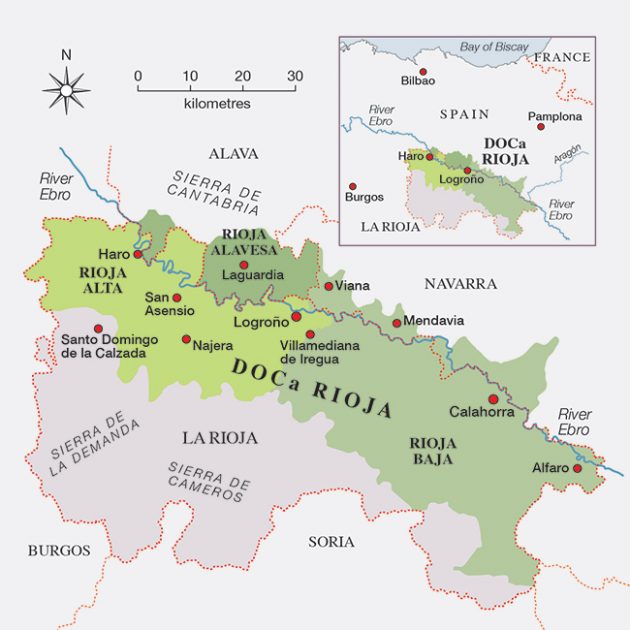
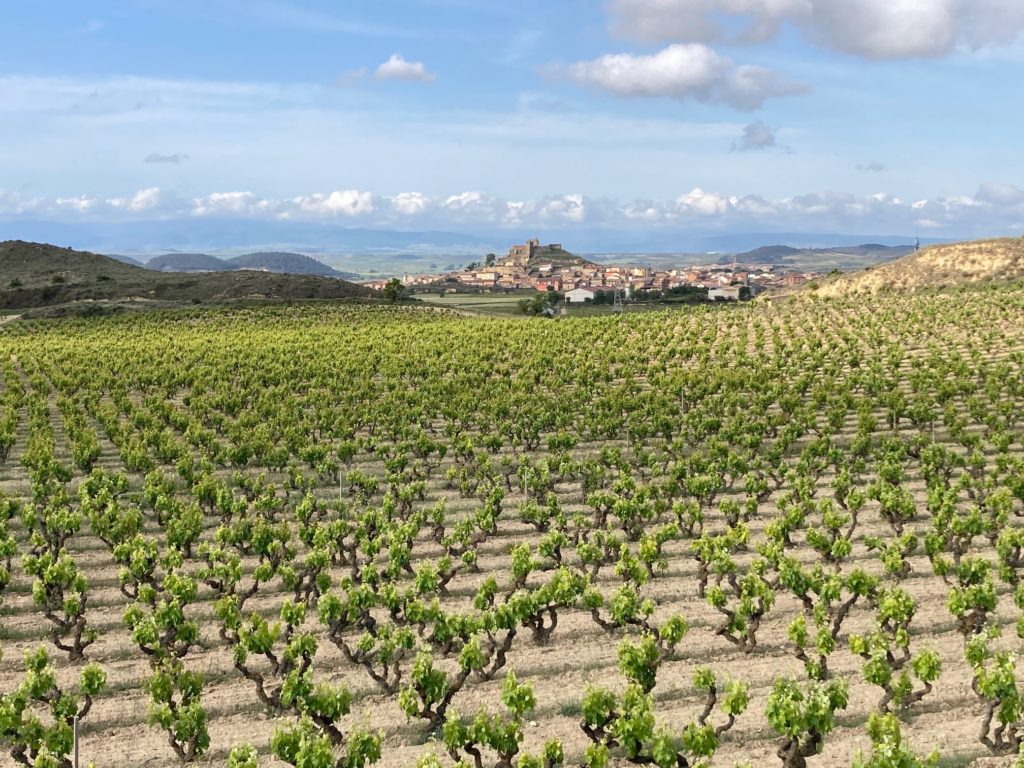
During the next 4 days, we toured, tasted and queried 10 different producers of Rioja wine. Documenting each visit in this blog post would be unwieldy and fatiguing to read, so I opted to share with you my favorite wines of the trip, with the qualification that they must be available in the US. There were other favorites, but sadly, not sold in the States.
White Rioja
Rioja Blanco, as it’s called, is made from the Viura grape (also known as Macabeo), with some winemakers choosing to add small amounts of juice from Malvasia. I found most of these offerings uninspiring when compared to white wines from other Spanish regions or other countries (France, Germany and Italy). That said, I was duly impressed with the Blanco Gran Reserva 2016 from Remírez de Ganuza ($114), as well as their Blanco Reserva 2020 ($42) (two bottles on the far right in the photo below).

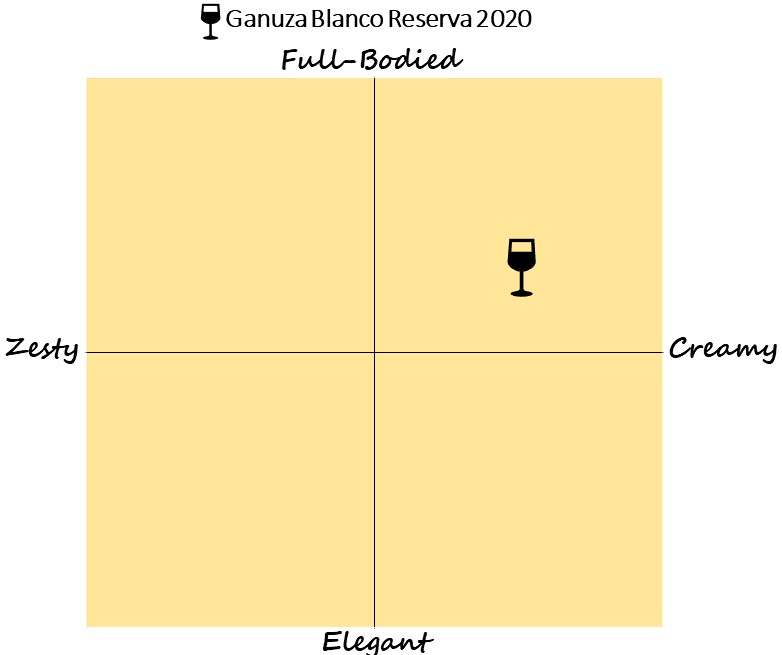
Made from 80% viura and 20% Malvasia & Garnacha Blanca, the wines are buttery and complex, more so with the Gran Reserva. Pair these wines with your best roasted chicken or roast pork recipes.
Red Rioja Reserva
Each producer usually offers Rioja Tinto (typically 100% Tempranillo grape juice) in three different aging classifications: Crianza (min 2 yrs at the winery – min 1 yr in cask), Reserva (min 3 yrs at the winery – min 1 yr in cask) and Gran Reserva (min 5 yrs at the winery – min 2 yrs in cask). Aroma and flavor profiles are different in each offering due to the different durations in wood and bottle. For a lighter-style Rioja, I thoroughly enjoyed the Valserrano Reserva 2016 from Bodegas de La Marquesa.
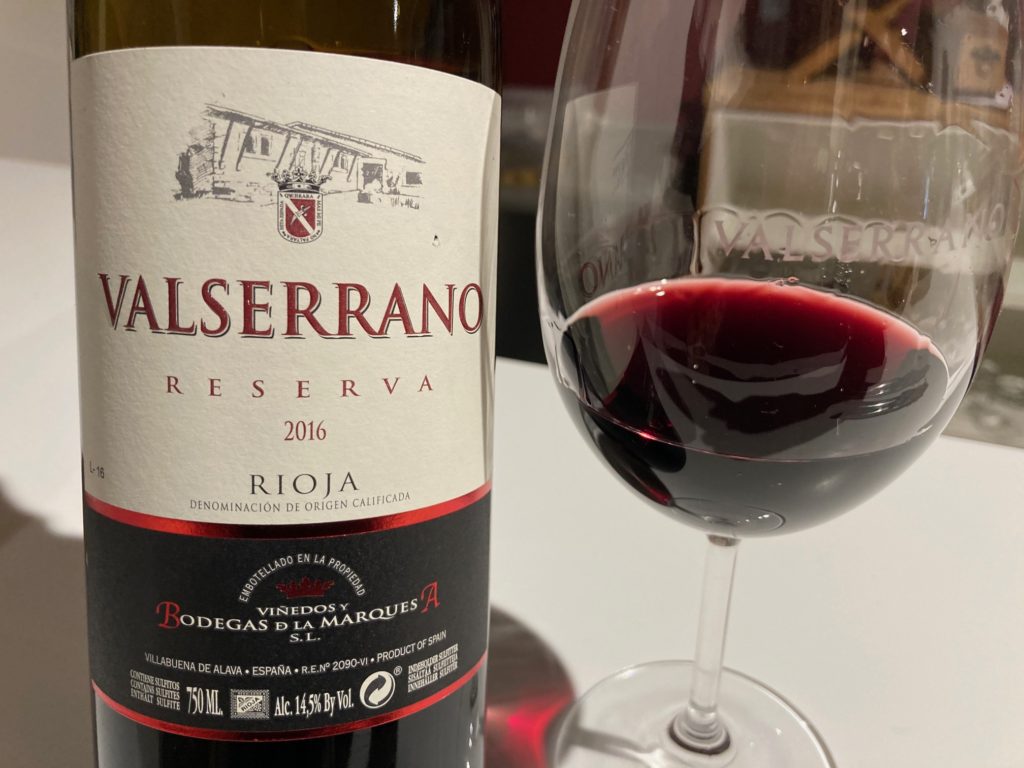
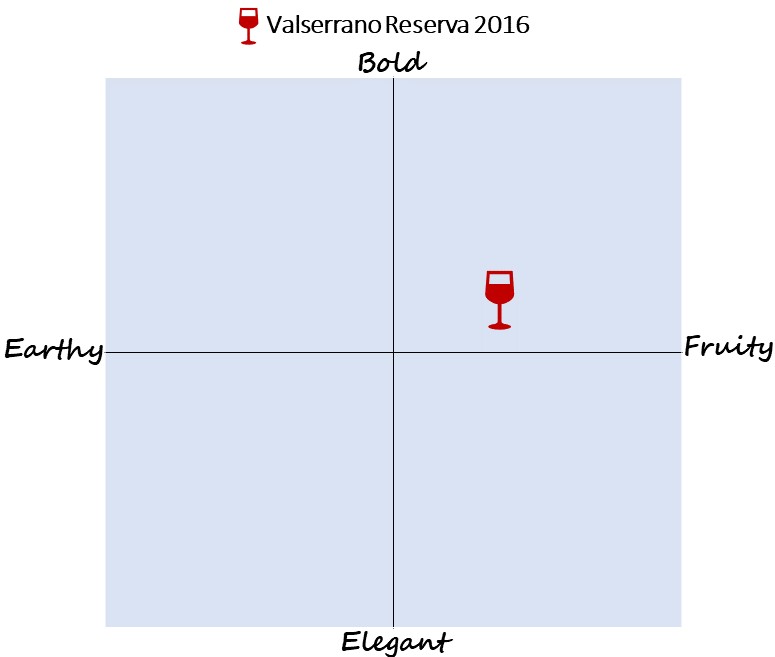
Bright red fruit on the attack led to a spicy, medium-bodied finish of darker fruits and refreshing acidity. I kept going back for another characterful sip; and I felt that this Reserva would serve as an interesting alternative to a village Pinot Noir from Burgundy or a Cru Gamay from Beaujolais. The Valserrano Reserva is widely distributed in the US through Total Wine & More for $26.
Red Rioja Gran Reserva
A richer, more modern style of Rioja was tasted at Bodegas Muga, the Prado Enea Gran Reserva 2015 ($97). Made largely from the Tempranillo grape and aged 3 years in French & American Oak, followed by 3 years in bottle. The Prado Enea is medium-plus in body with extracted red and black fruits, preceded by spices and licorice on the nose. Absolutely delicious and best paired with heavier fare: meat-based paella, braised meats and stews, and Manchego cheese.
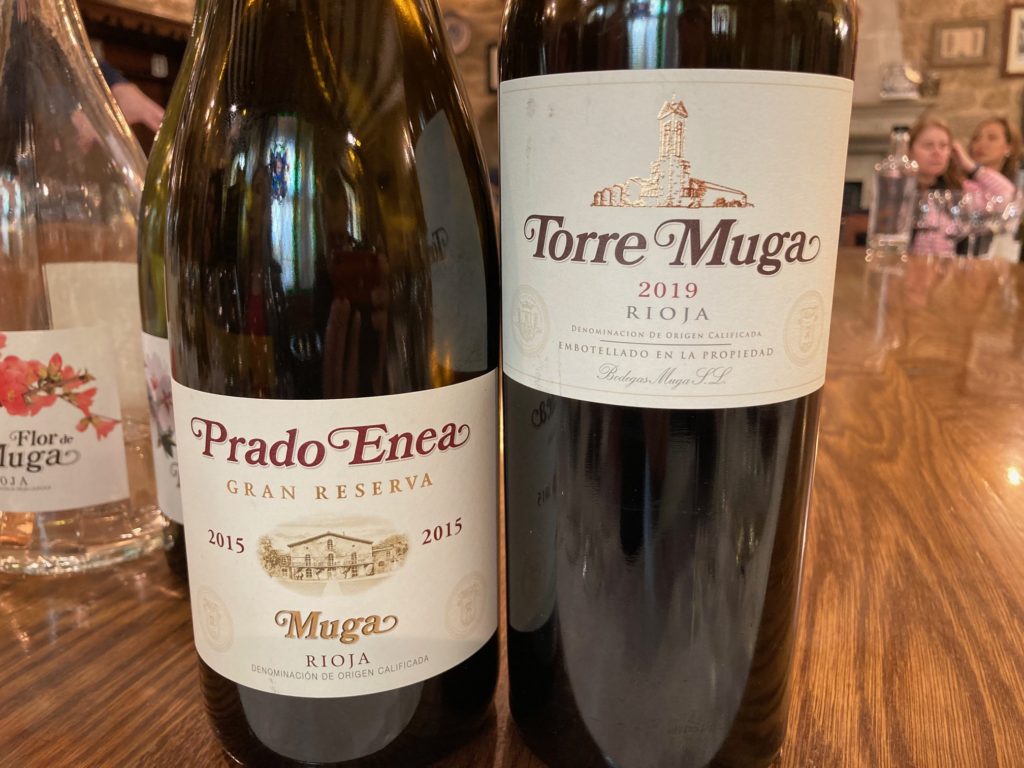
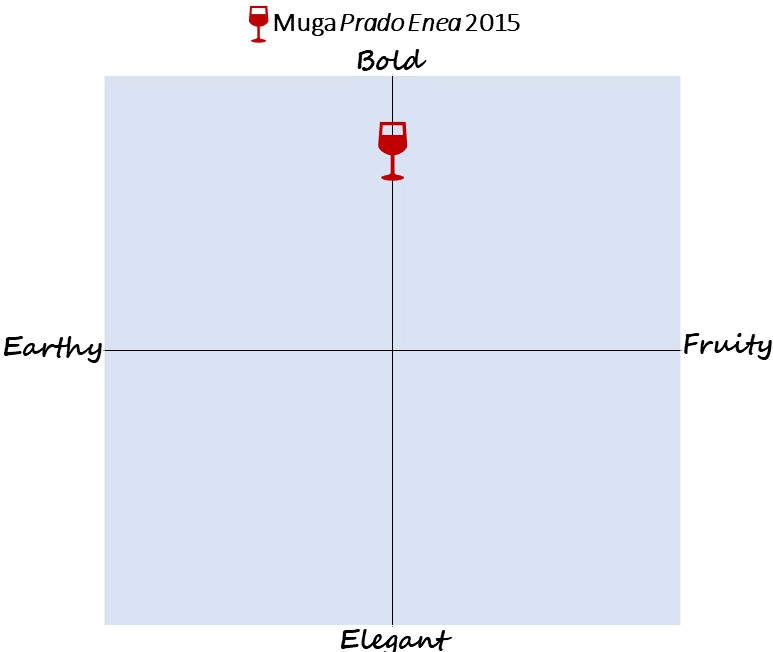
Another Gran Reserva that was served at our opening dinner was the 2014 vintage from Granja Remelluri. Far right bottle in the photo below. This wine leans more toward the traditional style of Rioja in my view, with black fruits, round tannins, and hints of cocoa bean and tobacco. The Remelluri Gran Reserva is one of my favorite wines in all of Rioja.
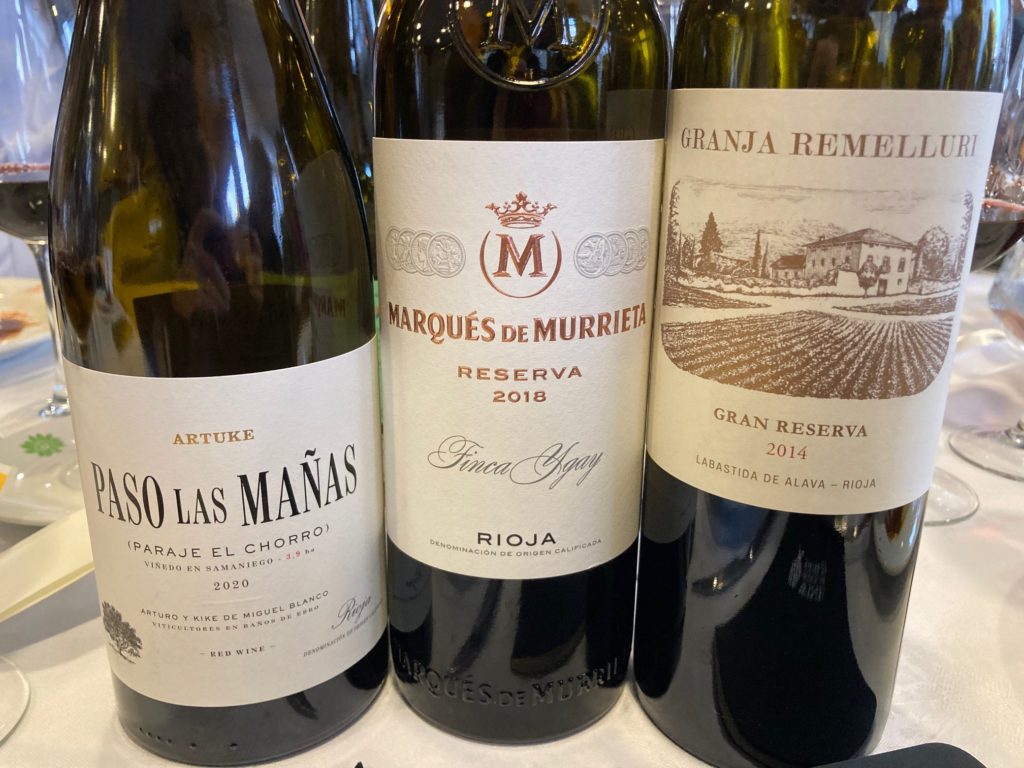
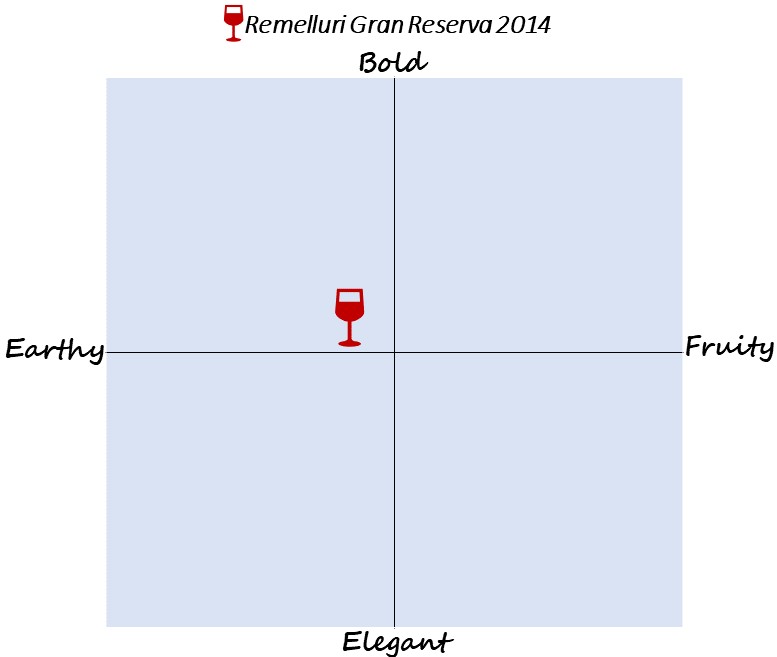
Cava
The sparkling wines of Spain, designated DO Cava, are underappreciated and have difficulty garnering attention on the world stage. If one maintains an open mind, you can’t help but enjoy the refreshing Conde de Haro Brut Reserva 2019 from Bodegas Muga ($30). Made from Viura and Chardonnay grapes, this Brut delivers aromas of lemon, grapefruit and baking spices. On a palate of fine bubbles, I found citrus, freshness and creaminess. Pour this instead of Prosecco at your next gathering; you won’t be disappointed.
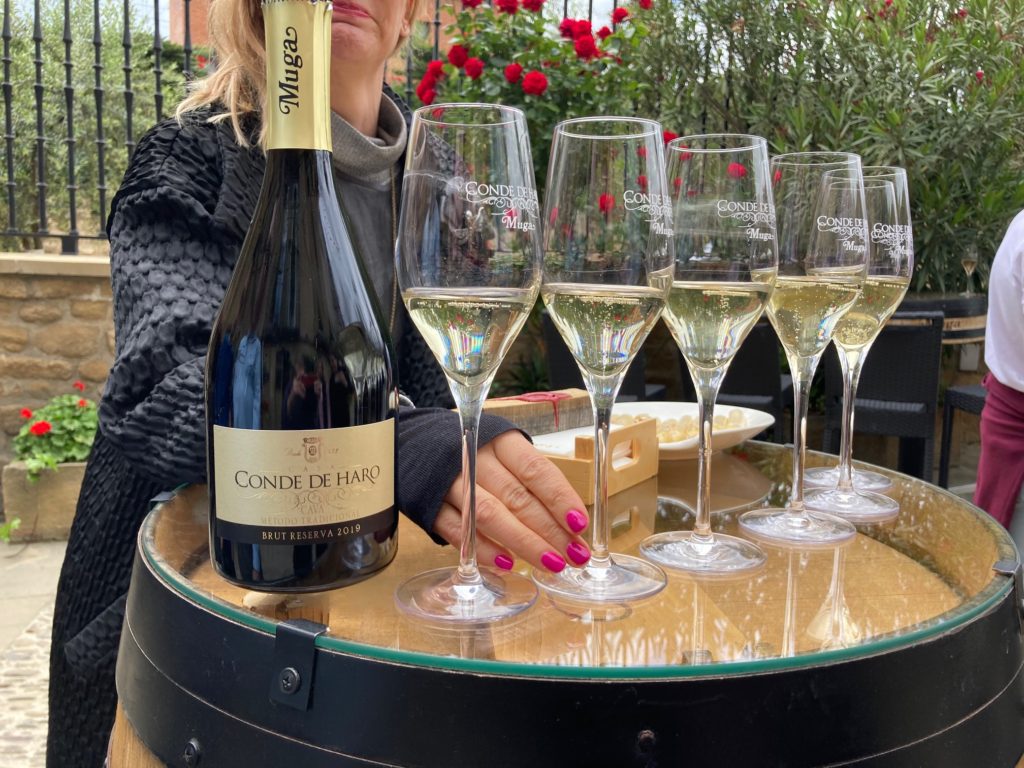
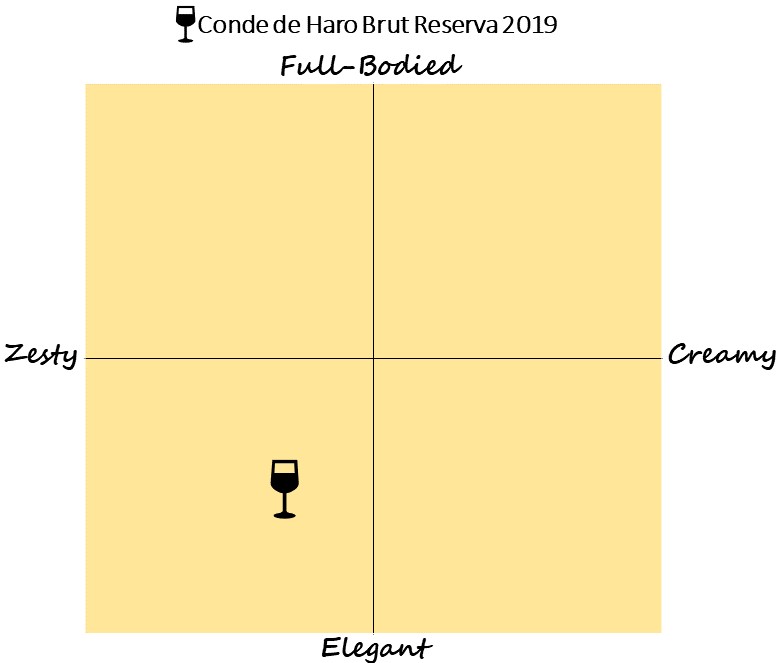
_ _ _ _ _ _ _ _ _ _ _ _ _ _ _ _ _ _ _ _
Here are some other Rioja producers (and their wines), not visited on this trip, that produce outstanding red wines:
Benjamin Romeo: La Viña de Andres Romeo
La Rioja Alta Gran Reserva 890
Murrieta Castillo Ygay Gran Reserva Especial
Viñedos de Paganos El Puntido Gran Reserva
Altos de Lanzaga
Should you choose to visit Rioja, be sure that the Hotel Marqués de Riscal, (see below) in the village of Elciego, is on your itinerary. The Frank Gehry architecture is stunning. Featuring two restaurants overseen by Michelin-starred Chef Francis Paniego, this Marriott-operated 5-star hotel is a gem in the heart of Rioja.
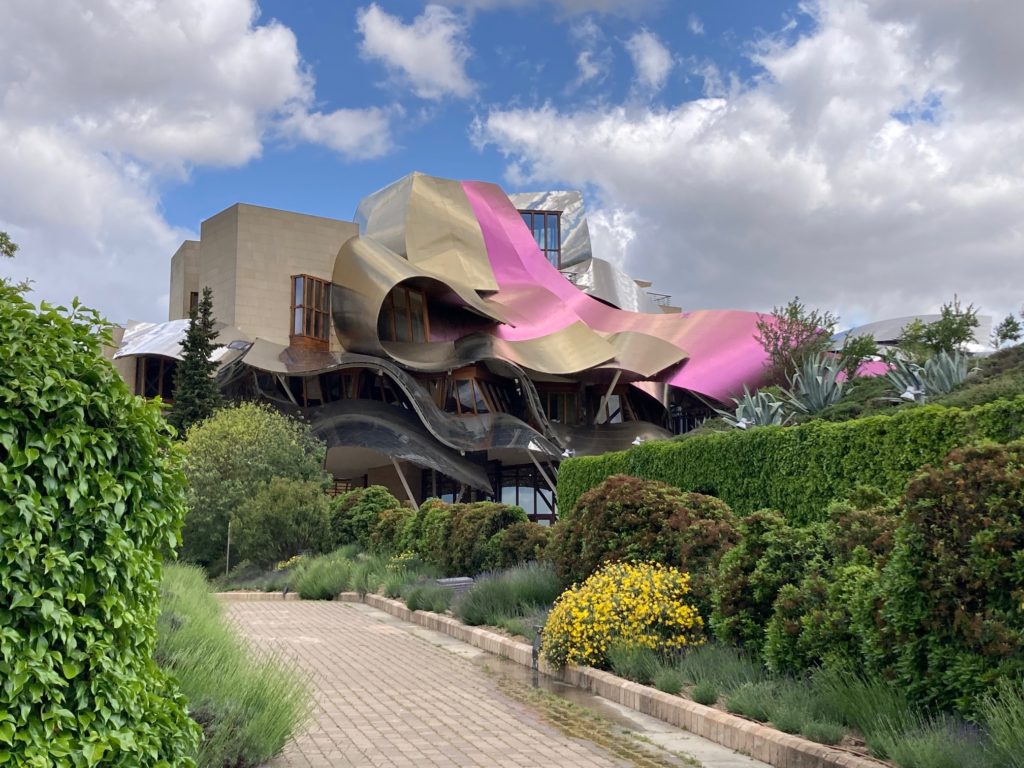
Thomas Lansen says
A beautiful and informative post, as usual.
Steven says
Thanks, Tom. Best to Tara.
Robert Guenther says
Steve, I certainly agree that Spanish wines are underappreciated.
Steven says
Thanks for commenting, Bob. Will respond to your email tomorrow. Have a great Father’s Day!
Robert Frank says
Steven,
I’ve done several WSG tours, in conjunction with my own wine travel in France. I have been frustrated with how typically most of the participants aren’t fully aware of wine and aren’t fully curious nor knowledgeable. I may try again next year. Do you have any plans to do a WSG tour in 24 or 25?
rjf9rjf@gmail.com is my email.